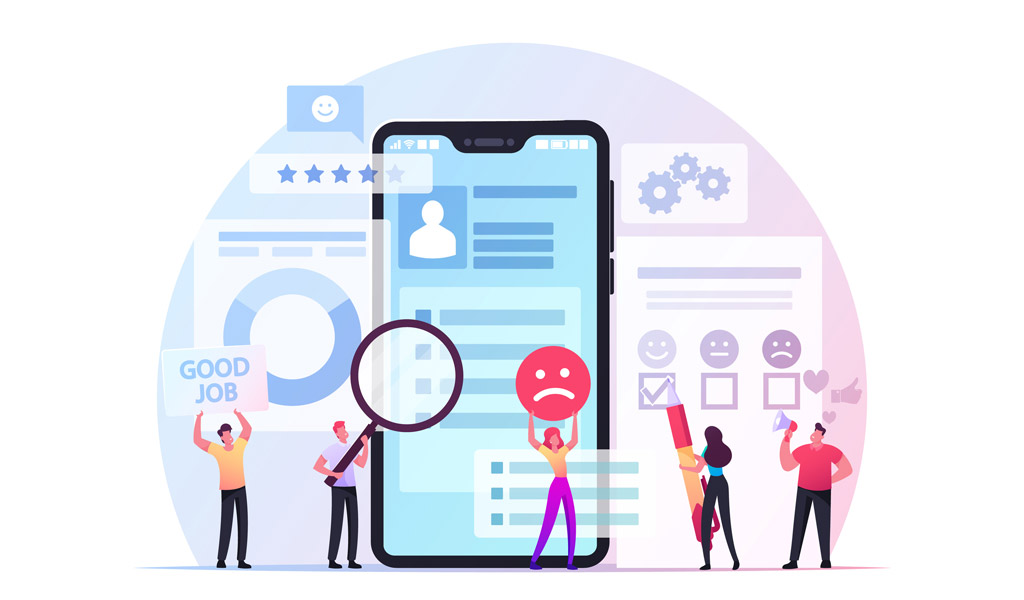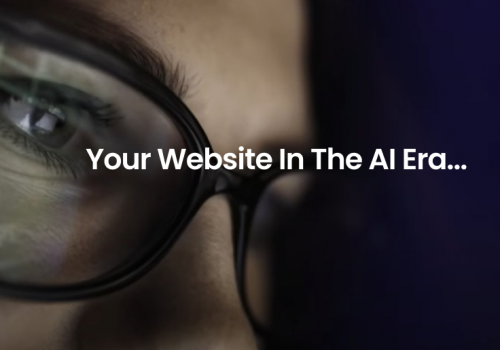Customer Experience and the customer journey are intrinsically linked. You can’t separate your customers’ actions when interacting with your brand from how they feel about the experience. A janky app that keeps crashing or a convoluted buying process will leave customers feeling frustrated and may ultimately result in abandoned shopping carts.
What is Mobile Attribution?
In marketing, attribution is how marketers understand the journey customers take to arrive at their app and what customers did when they got there. Marketers collect each data point for the action’s users take, from clicking on an ad to eventually making a purchase.
Why is Mobile Attribution Important?
Because it’s a measure of marketing effectiveness. By collecting and analyzing each customer action, you can discover how effective your ads are and whether customers tend to drop out of the buying process at specific points. Armed with this knowledge, you can continually improve your ads and mobile apps to drive the right customer actions.
It should come as no surprise that mobile advertising is a top priority for most digital age businesses. The statistics speak for themselves:
- People spend around 5 hours on average on their smartphones. For much of that time, users are connected to the internet. They’re either browsing social media sites like Facebook, Twitter, and Instagram, or on web pages and search engines.
- Over 60% of users will not return to a website that isn’t mobile-friendly.
- 70% of total web traffic now comes from mobile phones.
- Mobile advertising stood at $44.12 billion in 2018 and is predicted to reach an eye-watering 408.58 billion by 2026 – a CAGR of 32.5% over this period.
As more companies invest in mobile advertising, customer expectations will shift. Why? Because the more mobile adverts that exist, the more consumers can compare their experiences across these ads. What was a satisfactory mobile ad a few years ago could spark frustration today. Through mobile attribution, companies compete by making better and better ads and increasingly engaging mobile experiences for consumers. This is why mobile attribution is no longer a choice for many companies; it’s a necessity. Refusing to adopt mobile attribution practices can result in you being left behind as your competitors advance forward.
7 Things You Should Focus on In Mobile Attribution
1. Connecting in-app Advertising to User Install
This is where a user is using a third-party app and comes across one of your ads. They click the ad and are taken through the mobile attribution app, and then to the Google Play Store or iOS App Store, where they can download your app. This data is only gathered if the third-party app in question has code that can track the source of the install – this doesn’t happen natively. This makes mobile attribution more complex than web attribution, where cookies do a lot of the leg work.
So, how do marketers connect users to installs without Cookies and other traditional web attribution methods? In a few ways:
- Device fingerprinting: This is where companies collect publicly available information about the mobile device.
- Unique identifier matching: These are real-time click-to-install comparisons with the Play Store or App Store.
- Tracking ID: This is an Open URL or Click ID. Put simply, a unique ID is created for the user when they click on an advert. Although this ID doesn’t provide extensive information about the user, it does connect their click (action) to the install.

2. Connecting Desktop Users
This is about connecting the data between an individual who experiences your advertisement on their mobile and non-mobile devices. For example, a user who sees your ad on their work computer but then installs it from one of the app stores.
Many companies focus on cross-device targeting, hoping to put their ads in front of users in many different contexts. This type of marketing can be very effective because sometimes users don’t engage with an advertisement because of factors like:
- Inconvenient timing: They might be at work and can’t act on their desire to learn more.
- They’re playing a game and want to progress further. They don’t want to be taken away from the app. However, later in the day, when they’re browsing social media on their Desktop, they might be ready to learn more.
- They don’t engage with ads in specific contexts – We all have preferences and behavioral quirks. You might have a user who watches a lot of YouTube, but they never engage with ads on that platform. However, on Instagram, they’re much more willing to have their experience interrupted by ads. They might gravitate towards Instagram to see cool content but also because they’re open to finding new apps that interest them. They’re not open to this on YouTube, though.
By connecting desktop users and mobile users on an individual level, you can build more comprehensive buyer personas. You can discover more insights into how your most engaged users behave and what background they come from. For example, whether they typically hail from certain locations, fall within a specific age range, which gender they are, what devices they use, and so on. Armed with this information, you can better target other users who fall into those categories.
3. Determining Which Ads Work and Which Ads Don’t
Attribution data is invaluable in determining the success of your ad campaigns. You can look back at the history of which ads users engaged with before installing your mobile app and identifying which ads resulted in higher install levels. This data can help you figure out whether:
- Your ads perform better when they’re in a specific context. For example, let’s look back to our FotoxyClick example. You might find that install rates were higher with this in app-ad because the users had aligned goals. You might find that your ads on a gaming app didn’t perform so well.
- Some ads are better than others – If you run several campaigns on FotoxyClick, you might still find that some ads resulted in more installs than others. This could be because one ad was more vibrant and engaging, and others are dull and lacked clarity.
Marketers are continually fighting for users’ attention in 2021 because we live in an attention economy. You can guarantee that the user seeing your ad in-app has already used several apps today and seen many more ads than apps they’ve used. Grabbing the user’s attention enough to compel them to act is difficult in such a competitive space, and that’s why continually improving and tailoring your ads is essential.
4. Temporary Attribution
Temporary attribution differs from your regular attribution models because it’s a model you use for a limited period to gather intelligence about a specific ad.
For example, let’s say you have an app that allows users to monitor their followers, likes, and shares on Instagram. This app gives users in-depth insight into their social media growth and any factors hindering their growth. You decide to run a temporary ad campaign on a photo editing app called FotoxyClick (fake name). FotoxyClick users use that app primarily to edit photos they will upload to Instagram – allowing them to add filters and adjust exposure, brilliance, shadows, and all that good stuff.
FotoxyClick and your app users have a lot in common; they’re both invested in growing their social media following, and you think an ad on their app could be very lucrative. However, you’re not sure about this and decide to run a trial period of 1 week. Your ad will appear on the FotoxyClick app for one week, and you want to gather data about what actions customers take when they come from FotoxyClick to your app. Since you’re only running this campaign for a week, you don’t want this data included in your regular attribution model because it will skew the results over a more extended time period.

5. Which Ads Lead to the Most Valuable Customers
While all customers are valuable, some customers are more valuable than others. Some customers will only buy from you once or will only engage with your app infrequently. This can be for several reasons. Maybe what you offer isn’t a priority for them, just a casual interest. Or perhaps they love your product but are very frugal. On the opposite end of the scale, you have very loyal customers. These customers buy your products more frequently and also spend more money on each purchase, so acquiring more of them should be a top priority for any booming business.
With attribution data, you can identify which ads generate the most loyal customers. You can then analyze the ad to find out why. Is it because the ad speaks to something loyal customers want? Does it market your product in a way that is most attractive to loyal customers? If so, you can create more ads like this to draw in more of these customers.
You might also find that ads in apps or mobile sites with a wealthier user base also generate more expensive purchases for your company. In this scenario, these users aren’t necessarily more loyal, but they’re willing to spend more on a single purchase. Equally, the opposite could be true. A wealthier user base might be more discerning and less likely to make impulse purchases.
6. Choosing Your Attribution Partner
To get useful attribution data, you’ll likely need to use an attribution partner, but how do you pick the best one? You want to look for partners that can:
- Measure the initial user click.
- Attribute the click and install.
- Notify the partners of installs.
These are the basics, but you might also want to look for attribution services that can:
- Support a large number of different channels, even non-digital channels. You want to pick the channels that work best for your business based on how your users behave, not just the channels that are available to track.
- Offer extensive third-party tool integration.
- Offers raw data – They might produce snazzy charts and graphs, but ideally, you want to be able to look at the raw data yourself. This data could be invaluable to your data analytics team and help you discover more actionable insights.
7. Counting Users Only Once
One of the primary benefits of mobile attribution solutions is that they are specifically designed to only count users once. Different channels and platforms have different ways of tracking users, and this can lead to confusion and erroneous data. There’s not a standardized set of practices for monitoring users on mobile devices, and this is why mobile attribution is so essential. When users are counted twice, the success of your campaign can be inflated beyond its actual effectiveness. You might incorrectly think that one campaign has worked much better than it actually has. The decisions you make from this incorrect assessment can lead to more failed campaigns and poor optimization.




















